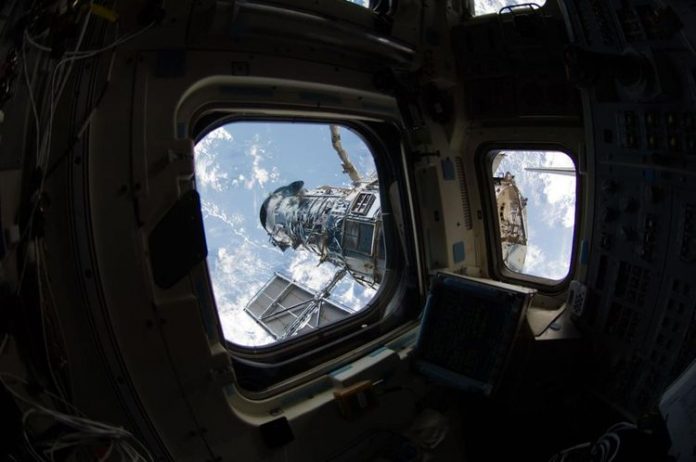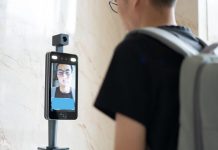Posted Oct 1, 2022, 11:30 AM
It has been evolving alone, a few hundred kilometers above our heads, for more than 32 years. The Hubble Telescope, one of the most important spacecraft in history, has grown accustomed to its loneliness. It has been thirteen years since he received any human visitors. The last time was in 2009, for the very last mission carried out with him by the shuttle Atlantis, before the retirement of the American orbiters. Since then, NASA has resigned itself to losing its legendary observatory, sooner or later.
Deprived of the means to come to its aid, the space agency only has to take advantage of its last years of life, while waiting for some breakdown to close Hubble’s eye definitively, or for its inexorable fall to stop. ends up forcing her to deorbit him. Raised to an altitude of more than 550 km by Atlantis, the telescope has already fallen more than 30 km, slowed down by the residual friction of the very high atmosphere. According to the latest estimates, the probability that it will be desorbed by 2037 is around 50%.
Hubble seen from the window of Atlantis in 2009.Nasa
But now a new hope arises. Thursday evening, NASA announced that it was responding favorably to a request from SpaceX by entrusting it with an unpaid feasibility study concerning a potential mission carried out by the Dragon capsule to raise Hubble’s orbit. For the moment, nothing concrete: “I want to be absolutely clear, hammered the scientific director of NASA, Thomas Zurbuchen. We are not announcing today that we are necessarily going to go further on this subject”.
“Pushing the limits of current technologies”
Still, the hypothesis is open. SpaceX sees it, in the words of Jessica Jensen, vice president of customer operations, as a way to “push the limits of current technologies” and demonstrate “how commercial partnerships can creatively solve complex problems. […] to achieve our common goal of becoming a multiplanetary civilization.
Elon Musk’s firm could partner with Polaris, the program of American billionaire Jared Isaacman, who himself had ordered the first 100% private space mission Inspiration4, aboard Crew Dragon, in September 2021. The second, called Polaris Dawn, is due to take place next year and is planning a spacewalk.
The Hubble feasibility study should make it possible to “determine whether it would be possible to implement a safe rendezvous, dock with the telescope and move it to a more stable orbit,” NASA said. Others have already tried to tackle the problem. In 2017, the firm Sierra Nevada Corporation, which is developing a miniature space shuttle concept, submitted a proposal. If the Trump administration had announced that it was studying the project, it had not followed up.
Troubleshooting Hubble is not easy. The telescope had been cut for NASA space shuttles, the only ones able, so far, to carry out maintenance operations. Put into orbit in 1990 by Discovery, it subsequently required five service missions: the first to correct a critical polishing defect in its primary mirror, the following to maintain its instruments, change its batteries and its gyroscopes. So many extremely complex operations that would be even more difficult without a crew.
“Crazy Ideas”
If the telescope is still functional, its lifespan is very uncertain. Half of the gyroscopes installed in 2009 no longer work. Synchronization problems were noted by the ground crews. This does not prevent Hubble from still making discoveries. NASA announced in March that it has detected the most distant individual star ever observed, Earendel, whose light took 12.9 billion years to reach Earth. More recently, he captured the impact of the Dart probe on the asteroid Dimorphos.
If it is now supplanted by the James Webb infrared telescope, it could still take advantage of its big brother’s overloaded program to stay in the game. And its pedigree speaks for itself: thanks to Hubble, the astronauts were able, among other things, to specify the age of the Universe (13.7 billion years) and demonstrate that its expansion is accelerating, capture the merger of galaxies, probe black holes… In total, he has made more than 1.5 million observations, having generated more than 19,000 scientific publications.
So many reasons enough to make NASA want to study any proposal that would extend its history, beyond the five additional years it granted it last year. According to the space agency, raising its orbit to 600 km could extend its lifespan by 15 to 20 years. On condition of ensuring that its instruments remain functional. Impossible mission ? Maybe. But Thomas Zurbuchen pointed it out: at NASA, “we are constantly working on crazy ideas. Frankly, that’s what we’re supposed to do.”














